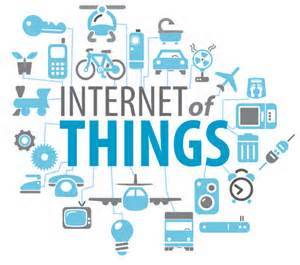By Alicia Fiorletta, Senior Editor

Did you know that by 2020, there will be up to 50 billion Internet-connected devices? These devices, which weave, integrate and talk to each other make up the Internet of Things, which creates an endless supply of data for organizations to sift through.
The emergence and maturation of the Internet of Things is inspiring retailers to innovate and rethink how different types of technologies and touch points connect with each other.
In the below Q&A, Dan Pickett, CEO of nfrastructure, an IT services company, outlines how retailers can prepare for the Internet of Things and drive innovation.
Retail TouchPoints (RTP): What consumer trends are driving retailers to think more creatively and progressively?
Pickett: Retailers need to embrace technology at new speeds while making sure that their customer offerings are differentiated in a creative and compelling manner. A focus on the omnichannel experience is part of what’s pushing retailers to be more progressive. Modern customers expect a seamless experience across all channels, which mean retailers are now tasked with integrating their online and digital brand with campaign advertising, catalogue, brick-and-mortar franchises and more. Retailers who don’t find a way to partner with the right technology will fall behind and will be perceived as less innovative when compared to their competitors.
RTP: What is preventing retailers from implementing new, innovative tactics and technology?
Pickett: Today, the biggest challenge to retailers implementing new tactics and technology is the pace of industry innovation. Retailers are constantly trying to take advantage of new opportunities in order to deliver a great customer experience and foster loyalty, but it isn’t possible to stay on top of every single new application available.
In order to create an infrastructure that aligns with core strategies, retailers need to build a solid enterprise architecture and then ensure there is proper governance in place to monitor all the initiatives. The first step to achieve a robust enterprise architecture is to understand what technologies are available. In most cases there are more technologies available than retailers have the capital to pursue, so in order to really understand your options, it’s often worthwhile to work with a consultant who can offer a larger industry perspective. Once the enterprise architecture is in place and the right technologies have been deployed and aligned, the correct governance strategies will be key to keeping tabs on progress.
RTP: What do retailers need to do to prepare for the new era of retail?
Pickett: In order to prepare for the new era of retail, retailers need to identify two critical factors. First, they must understand their market and their consumer. Second, they need to acquire a full understanding of their existing and emerging competition.
IT should start from the top and sell the value of a solid infrastructure with their company’s CEO or President. The key point that IT should raise is that enhancing customer experience, which ultimately increases sales can only be done with a solid infrastructure.
Once this is achieved, they can focus their full attention on setting up a robust enterprise architecture and deploying the correct governance mechanics which is the foundation of a great infrastructure. A proper infrastructure will allow everyone in the organization to make quick and smart decisions about implementing new applications and then will keep these key applications reliable and secure across all channels.
RTP: Do you have any specific tips or best practices for retailers looking to bring their customer experience to the next level?
Pickett: In order to bring customer experience to the next level, retailers need to do the following:
1. Clearly define what experience you’re hoping to give your customers. Great customer experience isn’t something you can just figure out on the side; businesses need to invest the time and resources to think strategically about how they want customers to experience their brand.
2. On the tactical side, set up a solid enterprise architecture and establish the correct governance mechanics that strengthen your infrastructure so that additional retail applications and features can be added at any time to enhance the customer experience.
3. Finally, partner with the right technology solutions so that customers have a smooth and seamless customer experience.






